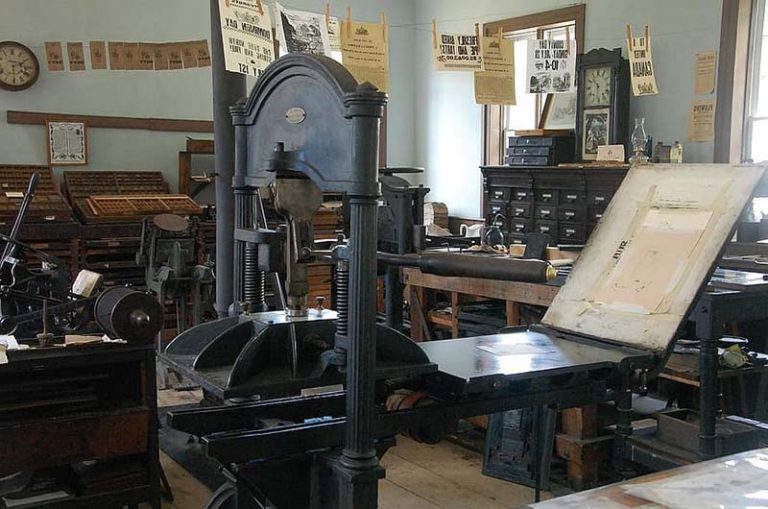By Robert Washburn
 A significant step towards helping independent community newspaper become more sustainable in the face of massive changes in the news industry took place last week with the release of the Ontario Community Newspaper Association’s Digital Market Study.
A significant step towards helping independent community newspaper become more sustainable in the face of massive changes in the news industry took place last week with the release of the Ontario Community Newspaper Association’s Digital Market Study.
The informative and highly practical document produced by Borrell Associates, and partially funded by the Collective Initiatives program at Canadian Heritage, provides a candid summary of current trends in small market newspaper publishing in Canada, while comparing the results to trends in the United States.
The report is rich in its content and the results deserve careful scrutiny over a longer period of time.
But, on first blush, a couple of things stand out.
As expected, the study focuses on the business side of newspaper publishing. And, while the study briefly addresses some issues about content, it is treated as thought it were afterthought.
Until the conversation becomes about both the journalism and the business, then solutions will not come. One-sided conversations dealing with the details of advertising and marketing can be useful. But addressing the editorial aspects of the industry cannot be ignored.
Think of it this way: Let’s say a company made soup and it spent all its time addressing the design of the label and placement on the store shelf, along with the national advertising campaign. But the soup tasted terrible. No one would buy it. It would not matter how much time and resources were spent on marketing, the soup would not be successful.
This appears to be what is happening within the news industry as a whole. The business side of news operations seems to ignore the quality of journalism. As this study demonstrates, the economic models of the news industry are undergoing a massive shift. It is necessary to examine all aspects of the operation, not just one in isolation.
While the study talks about content, it must also address the issue of the quality of content in terms of excellence. Until the conversation becomes about both, then significant, sustainable solutions for the long-term will not materialize.
In one of the areas where it briefly attempts to address content delivery, the study speaks to the use of Twitter to break news. The study suggests any efforts to use new platforms, such as social media and other new or emerging technologies should be done with caution since these take the audience away from the print product.
This is a rather antiquated view of these tools. Audiences want access to information immediately. They will not wait, even when it comes to smaller publications. The proliferation of smartphones and other mobile communication has created a demand for this type of news. However, once the breaking news is sent out, audience will go to online news sites and the print product for value-added materials that explain, expand, contextualize and interpret the news event.
Audiences will also turn to online sites for opportunities to engage in discussion, opinion-sharing and live events to participate, as the report points out.
It is vital community newspapers re-conceptualize content and how it is used. This represents a major cultural shift for many newsrooms and an altering of journalism practice away from traditional approaches.
It is not enough to ask journalists to tweet and post to Facebook or run a live blog. The process of producing news must be altered to find a maintainable practice and place people, time and resources to good use with the goal of producing higher quality journalism, not just event-based coverage (a mainstay in many community newspapers).
While this is not the place to address all the changes to the news ecosystem, the point is worth repeating: the tectonic shifts in journalism must be addressed throughly in the context of any changes in business.
“Each paper needs to ensure a robust online news and information presence in order to drive traffic.” Pg. 22
Nothing could be truer. The question for publishers and business leaders in the industry is how to address this in a sustainable manner.
The report also speaks to the need to educate local advertisers in understanding online marketing and metrics so they can better assess their success and return on investment. Newspapers could play a leading role in educating the community as sponsors of seminars in partnership with local chambers of commerce. The ONCA could even create a speaker’s bureau consisting of experts that members could call on when organizing an event.
One of the most critical aspects of the report is the discussion of print flyers, directories and coupons. These are the bread and butter of small community newspapers in terms of revenue. With the near demise of classified advertising in the face of Kijji and E-bay, it seems like only a matter of time when flyers and other staples of revenue will be replaced by similar online services.
This is the greatest threat to community newspapers.
Community newspaper are the heart of a network for flyer distribution. Without the flyer business, it is hard to imagine how many would remain open.
Finally, the report does not truly address the question of online-only publications, also known as hyperlocal news sites. When it does speak to local/hyperlocal, it is in the context of a traditional operation that maintains a print edition.
The question of the sustainability of an online-only news operation raises a different set of parameters. While a print edition depends on 90 per cent of its revenues from traditional advertising, it also must sustain higher operating costs with big buildings, printing presses and distribution networks.
Hyperlocal news sites can operate with one or two people and can be completely mobile, dramatically reducing many of the costs associated with traditional print.
There are many factors to be considered when trying to assess the viability of hyperlocal online-only news sites, which is not part of the mandate of this study. Still, it may have been a missed opportunity.
Lastly, the study does not address alternative revenue models. Some publications in the United States are finding success through obtaining government funds, foundation donations, sponsorships, grants, subscriber donations and more.
Certainly, this would appear to be extraneous to the study, but it should be mentioned that other revenues sources are being used. It is hard to imagine traditional community newspapers chains adopting any of these models, but it might be helpful to independents to consider thinking outside the box.


